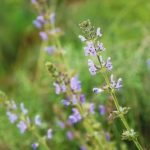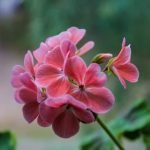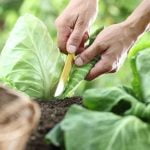When it comes to garden landscape ideas for small gardens, the possibilities are truly endless. Small spaces offer unique opportunities to get creative with design and maximize the beauty of your outdoor area. From utilizing vertical gardens to selecting colorful plants, there are numerous ways to transform a limited space into a stunning garden paradise.
In this article, we will explore the best strategies for creating beautiful small garden landscapes. We’ll cover everything from maximizing space with vertical gardens and tiered planters to selecting vibrant flowers and foliage for small garden spaces. Additionally, we will dive into the world of container gardening, focal points, low maintenance options, and seasonal interest to help inspire your own small garden landscape designs.
Whether you have a tiny balcony or a petite backyard, there are plenty of innovative solutions to make the most of your small garden space. By implementing the tips and ideas outlined in this article, you can create a visually appealing and functional outdoor oasis that reflects your personal style and brings joy year-round. Let’s embark on a journey of discovering the beauty of small garden landscapes together.
Maximizing Space
When it comes to garden landscape ideas for small gardens, maximizing space is key. One effective way to do this is by utilizing vertical gardens and tiered planters. These techniques not only add visual interest to your garden but also allow you to grow more plants in a smaller area.
One way to utilize vertical space in your small garden is by installing a trellis or a wall-mounted planter. This allows you to grow climbing plants such as ivy, jasmine, or even vegetables like tomatoes or peppers. Additionally, tiered planters can be used to create a cascading effect, with plants spilling over the edges of each level. This not only adds depth to your garden but also provides a variety of planting opportunities.
To make the most of vertical gardens and tiered planters in your small garden landscape, consider the following options:
- Install a trellis against a wall or fence
- Use hanging pots or baskets
- Create tiered raised beds or planters
- Incorporate shelving units for potted plants
By incorporating these features into your small garden landscape, you can make the most of limited space while adding visual interest and variety to your outdoor space. Whether you have a balcony, patio, or small backyard, vertical gardens and tiered planters are versatile options for creating a stunning garden oasis.
Colorful Plant Choices
Colorful flowers and foliage can bring life and vibrancy to any small garden landscape. When it comes to garden landscape ideas for small gardens, selecting the right plants is crucial in maximizing the space and creating a visually appealing environment. In small garden spaces, every plant matters, so it’s important to choose wisely.
One key idea for small garden landscapes is to select plants that offer multi-season interest. This means choosing plants that not only provide beautiful flowers or foliage during the growing season but also exhibit attractive features during other times of the year. For example, some plants have colorful berries that last through the fall and winter, providing visual interest even in the colder months.
Another effective way to add color to a small garden landscape is by incorporating different textures and shapes of leaves. Mix and match plants with varying leaf sizes and shapes to create contrast and visual appeal. This can help create dimension in a small space without overwhelming it with too many competing elements.
| Colorful Plant Choices | Selecting Vibrant Flowers and Foliage for Small Garden Spaces |
|---|---|
| Choose plants with multi-season interest | Example: Winterberry Holly – offers vibrant red berries throughout fall and winter |
| Incorporate different leaf textures and shapes | Example: Hostas – variety of sizes and shapes create visual interest |
Creative Layouts
Small gardens may pose a challenge when it comes to designing a functional and visually appealing landscape. However, with the right garden landscape ideas for small gardens, it is possible to create a stunning and practical outdoor space. When it comes to designing the layout of a small garden, there are several key considerations to keep in mind.
One of the most important aspects of designing a small garden layout is maximizing the available space. This can be achieved through the use of vertical gardens and tiered planters. Vertical gardens allow plants to grow upward instead of outward, making them ideal for small spaces. Tiered planters also help maximize space by allowing for multiple levels of planting within a compact area.
In addition to maximizing space, selecting the right plants is crucial for creating an attractive small garden landscape. Choosing vibrant flowers and foliage can add color and interest to the space, making it visually appealing. It’s essential to consider the size and growth habits of plants when working with limited space, opting for varieties that will thrive in smaller areas.
When it comes to creative layouts for small gardens, functionality is key. Designing pathways and seating areas that complement the overall aesthetic while maximizing usability is essential. Incorporating features such as water elements, sculptures, or strategically placed seating areas can also add visual interest and focal points within the garden landscape.
Overall, with careful planning and attention to detail, it is possible to create a beautiful and functional garden landscape in even the smallest of spaces.
| Aspect | Consideration |
|---|---|
| Maximizing Space | Utilizing vertical gardens and tiered planters |
| Plant Selection | Selecting vibrant flowers and foliage suitable for small gardens |
| Creative Layouts | Designing functional pathways and seating areas |
Container Gardening
Small garden landscapes present a unique challenge when it comes to maximizing space and creating visually appealing designs. Container gardening is an excellent way to overcome these challenges and create stunning garden landscapes, even in small spaces. Here are some ideas for utilizing pots, troughs, and hanging baskets to enhance the beauty of small gardens:
- Utilizing Pots: Choose a variety of different-sized pots to create depth and dimension in your small garden landscape. Opt for lightweight materials like plastic or resin to make moving them easier if you need to rearrange your design.
- Troughs: Troughs are a versatile option for small gardens, as they can be placed along walls or fences to maximize space. Consider planting herbs, succulents, or trailing flowers in troughs to add visual interest and texture.
- Hanging Baskets: Hang baskets from pergolas, fences, or even tree branches to add layers of greenery and flowers without taking up valuable ground space. Mix and match different types of foliage and blooms for a stunning visual impact.
Container gardening offers endless possibilities for creating beautiful garden landscapes in small spaces. By using pots, troughs, and hanging baskets strategically, you can add color, texture, and visual interest to your small garden while making the most of limited space. Whether you’re growing vegetables, herbs, flowers, or a combination of all three, container gardening is a versatile and practical solution for small garden landscapes.
Focal Points
When it comes to small garden landscapes, incorporating focal points can make a big impact. Focal points are essential in drawing the eyes and creating visual interest in any garden, regardless of size. In small gardens, the right focal point can take center stage and elevate the overall design. Incorporating eye-catching features such as water features, sculptures, and seating areas can truly transform a small garden space into a stunning outdoor oasis.
Water Features
One of the most popular focal points for small garden landscapes is a water feature. Whether it’s a bubbling fountain, a serene pond, or a simple birdbath, water features add movement and tranquility to any garden. In a small garden setting, consider incorporating a wall-mounted fountain or a tabletop water feature to maximize space while still enjoying the soothing sound of flowing water.
Sculptures
Sculptures can also serve as captivating focal points in small gardens. From elegant statues to modern abstract pieces, sculptures add personality and artistry to outdoor spaces. When choosing sculptures for a small garden landscape, opt for smaller pieces that won’t overwhelm the space but still make an impactful statement.
Seating Areas
Creating inviting seating areas within a small garden can also serve as an eye-catching focal point. Whether it’s a cozy bench nestled among blooming flowers or a bistro set placed in a sunny corner, incorporating seating areas not only provides functional purpose but also adds charm and character to the overall garden design.
Incorporating these eye-catching features into your small garden landscape will undoubtedly enhance its beauty and create an inviting outdoor retreat for relaxation and enjoyment. With strategic placement and thoughtful selection, these focal points will elevate your small garden into a visually stunning haven that reflects your personal style and creativity.
Low Maintenance Options
When it comes to small garden landscape ideas, choosing low-maintenance plants and landscaping features can make a huge difference in the overall look and feel of your outdoor space. Not only do low-maintenance options require less time and effort to care for, but they can also provide long-lasting beauty without constant upkeep. Here are some key considerations for selecting low-maintenance plants and landscaping features for small gardens.
Native Plants
One of the best ways to create a low-maintenance garden landscape for a small space is to incorporate native plants. Native plants are well-adapted to the local climate, soil, and environmental conditions, making them naturally resilient and easy to care for. They also require minimal water and fertilizer, reducing the need for ongoing maintenance.
Drought-Tolerant Features
Incorporating drought-tolerant landscaping features such as gravel or mulch pathways, xeriscaping with succulents and cacti, and using drip irrigation systems can significantly reduce the need for watering and maintenance in a small garden landscape. These features not only add visual interest but also promote sustainability by conserving water resources.
Hardscaping Elements
Integrating hardscaping elements such as decorative stones, pavers, or retaining walls can minimize the amount of regular maintenance required in a small garden landscape. Hardscaping features add structure and definition to the space while reducing the need for mowing, trimming, or pruning. Additionally, they can help create separate functional areas within the garden design without necessitating constant attention.
By incorporating these low-maintenance plant selections and landscaping features into your small garden landscape design, you can create a beautiful outdoor space that requires minimal upkeep while still providing year-round interest and charm. Whether you have limited time for gardening or simply prefer a more fuss-free approach to landscaping, these options offer practical solutions without compromising on style or visual appeal.
Seasonal Interest
When planning a garden landscape for a small space, it’s important to consider how the garden will look throughout the year. By selecting plants and design elements that provide year-round interest, you can ensure that your small garden remains visually appealing in every season. One great idea for achieving this is to incorporate evergreen plants into your garden design.
Evergreens maintain their foliage throughout the year, providing color and texture even in the winter months. Examples of evergreen plants suitable for small gardens include boxwood, yew, and holly.
In addition to evergreen plants, incorporating plants with interesting bark or striking winter berries can add visual interest to your small garden during the colder months. For example, paperbark maple trees feature beautiful peeling bark that adds texture and visual appeal to the garden in winter.
Additionally, shrubs like winterberry produce bright red berries that can create a pop of color against the winter landscape. These types of plants can help ensure that your small garden remains attractive even when many other plants are dormant.
Another way to create year-round interest in a small garden is by incorporating design elements such as decorative hardscaping features or structures. For example, installing an arbor or pergola can provide architectural interest even when plants are not in bloom.
Adding decorative stones or pebbles to pathways and borders can also contribute to the overall aesthetic of the space throughout the year. By carefully selecting both plants and design features with seasonal interest in mind, you can create a stunning small garden landscape that delights throughout every season.
By paying attention to elements like evergreen plants, visually striking bark and berries, and hardscaping features, you can create a small garden landscape that provides beauty and interest all year long. With careful planning and selection of plant varieties and design elements, it’s possible to achieve a visually appealing and dynamic space regardless of size constraints.
Whether it’s the swaying grasses of summer or the sculptural forms of bare trees in winter, there are numerous ways to create an engaging and attractive small garden landscape that evolves with each passing season.
Conclusion
In conclusion, creating a stunning garden landscape in a small space is definitely achievable with the right planning and creativity. By maximizing space with vertical gardens and tiered planters, selecting vibrant plants for colorful displays, and designing creative layouts, even the tiniest of outdoor areas can be transformed into a beautiful oasis. Container gardening and incorporating focal points such as water features or sculptures are also great ways to add interest and personality to small gardens.
It’s important to remember that low-maintenance options and plants that provide year-round interest can make it easier to upkeep a small garden landscape while still enjoying its beauty throughout the seasons. Whether you have a patio, balcony, or tiny backyard, there are endless possibilities for creating your own little piece of paradise.
So, let your imagination run wild and start implementing some of these garden landscape ideas for small gardens. With careful planning and a bit of hard work, you can create a stunning outdoor space that will bring joy and relaxation for years to come. After all, great things come in small packages – including gorgeous garden landscapes.
Frequently Asked Questions
How Do You Arrange Plants in a Small Garden?
When arranging plants in a small garden, it’s important to consider their mature size and growth habits. Grouping plants with similar water and light needs together can help maximize space and create a cohesive look.
How Do I Make a Nice Small Garden?
To create a nice small garden, start by carefully planning the layout and choosing the right plants for the space. Incorporating vertical elements like trellises or hanging baskets can also add visual interest.
What Is Best for a Small Garden?
The best approach for a small garden is to focus on utilizing the available space efficiently. This may involve incorporating compact or dwarf varieties of plants, utilizing vertical gardening techniques, and keeping the overall design simple yet visually appealing.

Welcome to my gardening blog! I am passionate about plants and enjoy sharing my knowledge and experiences with others. In this blog, I will write about everything related to gardening, from tips on how to get started to updates on my own garden projects.





